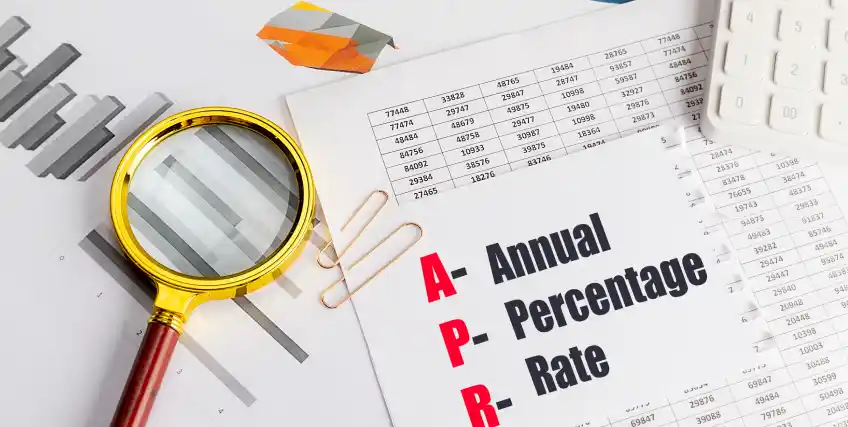How to Buy Commercial Real Estate with a Loan
April 10, 2025 | Last Updated on: April 10, 2025

Social media is ablaze with real estate investors telling people that they can build a profitable business by investing in commercial real estate. Unfortunately, most of these posts are high-level and don t get into the nitty-gritty details of how to actually make your first commercial property real estate deal. Some even give faulty advice about the tax benefits you can receive, or what the market conditions are really like.
If you re a beginner, before you even consider investing in any real estate, you must put in the time to really understand current commercial real estate market trends. This means having the answer to questions like: What property types can be called commercial real estate? What are your commercial real estate financing options? How do you apply for a commercial real estate loan? How should you come up with commercial real estate property values? how to do due diligence, and more.
Because of low supply and constant demand, multi-family properties are still fairly strong, in part due to work-from-home policies and shifting population trends. At the same time, other commercial properties, like office spaces and retailers, have seen a decline.
Warehouses and other similar properties are also seeing a boom as companies like Amazon work to increase their delivery coverage and improve their speed to meet online ordering demands.
Knowing these trends is vital when considering what kind of property to invest in. But before you even get to that, you must have a strong understanding of the types of properties you can buy and the types of commercial real estate financing available to you.
In this article:
- What kinds of commercial real estate can I buy?
- What type of commercial real estate financing or loan is best for commercial property?
What kinds of commercial real estate can I buy?
Here are a few types of commercial real estate investments you can consider:
Office Buildings
Although office buildings are currently seeing higher vacancy rates due to work from home policies, more and more businesses are returning to the office full-time or part-time. This means that in the future, it s possible that offices will return to their previous occupancy levels or at least near previous levels. It also means there might be good deals available right now, as prices may still be down. In general, office buildings have long-term tenants and so can help you turn the rental income into a passive income stream for your investment portfolio. Especially if you use a property management company to deal with the day-to-day maintenance issues.
When it comes to buying office buildings, there are three main types to consider:
- Class A office property. This office property is high-end and expensive real estate that is located in the most desirable areas for commerce such as the downtown area of a large city. Financial institutions, law firms, and other large corporations are likely to use Class A office buildings.
- Class B office property. Class B does not have all of the amenities found in a Class A office building but is still more than adequate. Class B buildings are often older facilities with lower rent than Class A. Class B buildings are usually only four stories or fewer, and rather than being located in the heart of a large business district, are more often found in suburban areas.
- Class C office property. The lowest class of office properties is located in lower-traffic, less desirable areas. Class C office space doesn t have the attractive amenities of Class A or even Class B office buildings. Rent is lower and they are usually occupied by small businesses with less money to spend on office space. While right now might not be the best time to invest heavily in office buildings, depending on your area and the industries that dominate, it may still be a good option for you.
Industrial Buildings
Usually located outside of city centers, industrial buildings like warehouses are almost always low-rise and expansive buildings. These types of buildings can include:
- Heavy manufacturing buildings with large machinery that manufacturers use to build or create products and goods.
- Light assembly buildings for manufacturing and storage.
- Bulk warehouses used to store goods, typically occupying large amounts of space.
- Flex Warehouses that can be used for light assembly, as well as office work.
Retail/Restaurants
This is a broad category that can include:
- Standalone brick-and-mortar restaurants and retail stores
- Small shopping centers, often referred to as strip malls, consisting of separate retail businesses that share a parking lot. Pizza parlors, convenience stores, pharmacies, nail salons, ice cream parlors, and dry cleaners are some of the types of stores often located in a strip mall. These often occupy a space of 150,000 to 350,000 square feet and can have a large national chain retailer as an anchor store.
- Regional shopping malls can range from 400,000 square feet to more than 2 million square feet. Unlike strip centers which might be located near a small town center, regional shopping malls require large parking lots or decks and usually contain multiple anchor stores.
- Out parcels is a term that refers to undeveloped land near retail businesses that is intended for future construction. It s not uncommon to find this type of property in developing areas, such as high-growth suburbs around large cities.
Multifamily
All residential properties, other than homes intended for single families, are considered multifamily residential real estate. This includes real estate with multiple housing units within a building or a complex of buildings.
Multifamily properties are more expensive than some other forms of commercial real estate, but with rent coming from multiple tenants, financing these properties tends to be easy to get, even compared with a traditional home loan.
Some common types of multifamily real estate include:
- Garden apartments complexes
- Mid-rise apartment buildings
- High-rise Apartments
- Walk-ups
- Special-purpose housing
Hotels/Hospitality
Depending on the area you re looking at investing in, this can be a lucrative investment. Several years after the pandemic created pent up demand, tourist areas are still seeing upticks in visitors that call for investment in the hospitality industry.
The hotel/hospitality category includes:
- Full-service hotels
- Limited-service hotels
- Extended-stay hotels
- Boutique hotels
- Hostels
- Resorts
Land
A plot of undeveloped land can be considered commercial real estate if the land is in an area that is zoned for commercial use and the buyer intends to use it in that way.
There are three types of land that commercial real estate financing can purchase:
- Greenfield land is land that has never been used, so there is no need to demolish or rebuild any existing structures.
- Infill land is vacant land in a developed area, such as an empty lot between homes or an available piece of land between older buildings.
- Brownfield land is land that has been previously developed, but is not currently occupied or in use. These plots are often environmentally contaminated from the activities of the previous industry on the site.
While these types of commercial real estate are not the only options available, they are the most prominent categories. If none of these real estate investing opportunities are right for you, you could also consider self-storage facilities, churches, amusement parks, bowling alleys, car washes, theaters, nursing homes, community centers, or a host of other options.
What type of commercial real estate financing or loan is best for commercial property?
Lenders offer several types of commercial real estate financing options that help business owners acquire investment property. Not all options are equally accessible, so before you go filling out loan applications, it s worth getting a basic understanding of the most common types of loans and the eligibility requirements so you don t waste time. For many commercial real estate loan options, you must be a business owner who has a good credit score, annual revenue of at least $250,000, and have a company that has been in business for several years.
While there are different ways to acquire these loans for real estate, Biz2Credit is one reliable source of funding that has helped others expand their businesses and investments, like Shirley Carson who received a bridge loan to invest in an apartment complex.
Here are some business loans for real estate:
SBA (7a) Loans
The U.S. Small Business Administration (SBA) offers commercial financing through its SBA 7(a) loan program. If you re looking for loans to purchase commercial property, SBA 7(a) loans can be a good choice. They also give the business owner a chance to borrow funds for working capital. And as an added benefit, they don t charge origination fees and have good loan rates.
These loans are great for businesses that are unable to secure credit anywhere else. With an SBA (7a) loan, the borrower can buy land or buildings, build on new property, or make renovations on an existing property as long as the real estate will be occupied by the property owner.
To do this, an entrepreneur can borrow up to $5 million for the purchase price through an SBA-affiliated commercial real estate lender with an interest rate that can be fixed, variable, or a combination of the two. Loan terms for these commercial real estate loans can be as long as 25 years for repayment with each monthly payment staying the same for the duration of the loan.
CDC/SBA 504 Loans
Also backed by the U.S. Small Business Administration, these 504 loans are actually a hybrid form of financing. One loan comes from a Certified Development Company (CDC) for up to 40 percent of the loan amount, and one loan from a bank for half the loan amount or greater. The low down payment requirement of this type of loan makes CDC/SBA 504 loans perfect for growing companies that might not have more than 10 percent to use as a down payment.
Typically, this type of loan is for either 10 years or 20 years. Unlike, SBA (7a) loans that can be fixed, variable, or both, borrowers get a fixed rate when taking out a loan from the 504 loan program. However, applicants will be required to show the lender a business plan and projected cash flow data, as well as proof that they re capable of managing a business entity.
Traditional Commercial Mortgages
Standard commercial lending through traditional lenders (like banks) is not backed by the federal government, however, borrowers use traditional commercial mortgages to buy commercial properties or to refinance them.
Traditional commercial mortgages usually have loan interest rates between 5 percent and 7 percent, with closing costs ranging from 2 percent to 5 percent. Repayment terms could be as short as five years or as long as 20 years, with full amortization over the life of the loan.
It s important to note that qualifying for a traditional mortgage is not as easy as other types of commercial real estate loans. They ll be looking at your creditworthiness and examining your business to ensure that your commercial property loan is viable.
Commercial Bridge Loans
A short-term form of funding, a commercial bridge loan can help a company owner get the cash they need quickly. A small business might consider a bridge loan to keep the company solvent and able to pay its bills during a time when cash is scarce but invoices that are outstanding are on their way.
If a business is in the market for new real estate but lacks the time required to go through the process of securing a mortgage, a bridge loan can be a good solution.
This type of small business loan can also help cover expansion plans so that a growing company can hire more employees, search for more spacious accommodations or renovate their space.
Here is how Biz2Credit arranged a commercial bridge loan for this Texas-based real estate owner.
Hard Money Loans
Commercial real estate financing can be expedited through a hard money loan from either a company or an individual and can be a faster way of securing financing than you would get if you went through the application process at a bank. The time frame difference between a hard money loan and a traditional loan from a bank could be from a week to a month or two.
Hard money loans for business are comparable to bridge loans, with one big difference: the down payment and interest rate on a hard money loan usually will be higher than a bridge loan, because of the higher risk of default. Keep these differences in mind as you make the decision to pursue financing.
Pro tip: You can find lenders just by googling terms like hard money lenders near me, but you should also try terms like alternate lenders for real estate to see your options.
Commercial Mortgage-Backed Security (CMBS) Loans
A Commercial Mortgage-Backed Security loan is a permanent, fixed-rate commercial real estate loan. It s a type of commercial mortgage loan that is packaged in a pool with similar commercial loans. Typically it is securitized and sold in the secondary market to institutional investors. The loans in the pool are held in trust and are considered the collateral for the mortgage-backed security.
One benefit of CMBS loans is that they offer lower fixed rates than traditional commercial real estate loans. Additionally, most of these loans have terms of five to 10 years with 20-30-year amortization periods.
Any business owner who occupies more than 51 percent of the commercial property may apply for any of these types of financing.
Wrapping up
We covered a lot of ground in a fairly short article, but it s not rocket science. As a basic rule of thumb, make sure you know the return on investment (ROI) on the property you re interested in investing in, and then look for a loan option that makes sense within your timeframe. You don t have to become an expert in commercial real estate financing to get a good deal you just have to know the experts who can help you. So, find a reputable provider like Biz2Credit and talk through your options so you can get a commercial real estate loan that fits your needs.
FAQs
How to get financing for commercial real estate?
If you want financing for commercial real estate, consider the following:
- Bank loans are a standard option for financing commercial real estate and can be used for various purposes. Banks and credit unions generally offer reasonable interest rates and terms but have strict requirements for qualifying.
- SBA loans: SBA 7(a) and SBA 504 loans are options for financing commercial real estate, offering maximum loan amounts of up to $5.5 million. Down payments can be as low as 10%.
- Real estate crowdfunding portals: Money for real estate projects can be used through these platforms.
What is mezzanine financing in commercial real estate?
Mezzanine financing is a blend of debt and equity used in commercial real estate to bridge the gap when senior debt falls short of covering the cost of a project or acquisition. It acts as a layer of debt positioned between the first mortgage and the owner's equity. While subordinate to senior debt, it prioritizes preferred and common equity.
How does commercial real estate financing work?
When buying real estate, purchasers typically require a bank or financial institution loan. However, the process differs slightly in the case of commercial real estate (CRE). CRE refers to income-generating properties used exclusively for business, such as office buildings, shopping malls, and retail spaces.
What is seller financing commercial real estate?
Seller financing in commercial real estate is a financing arrangement where a property's seller acts as the buyer's lender. The buyer makes a down payment and then regular payments to the seller over an agreed-upon period. The costs include interest and the principal. Seller financing can be attractive to buyers who may not qualify for a traditional loan or want to avoid the high fees and stringent requirements of conventional loans. It can also benefit sellers who wish to sell their property quickly.
What is the typical term of a commercial property loan?
While home loans often span 20 to 30 years, commercial mortgages typically have shorter terms, ranging from 5 to 10 years. Lenders will request an appraisal to verify the property s value and review financial statements to ensure that current rental income is sufficient to cover the debt payments.
Frequent searches leading to this page
commercial property loan, commercial real estate lenders, commercial real estate financing, commercial building loan




